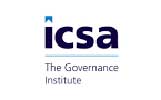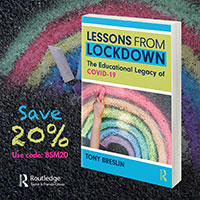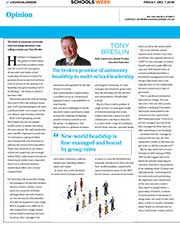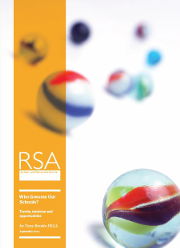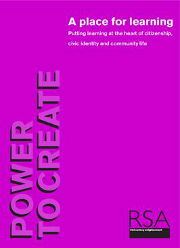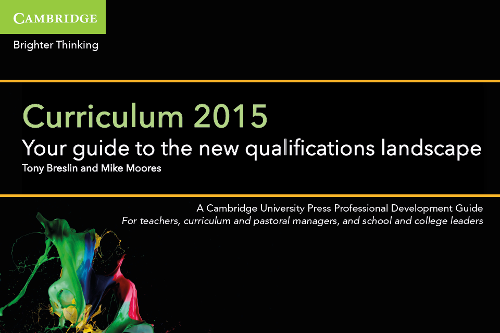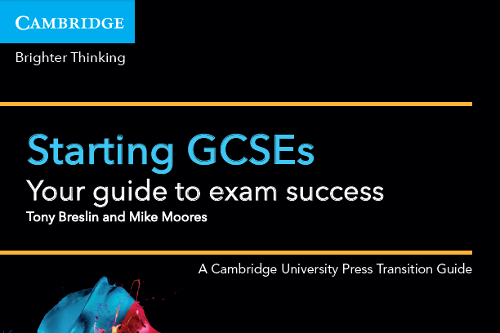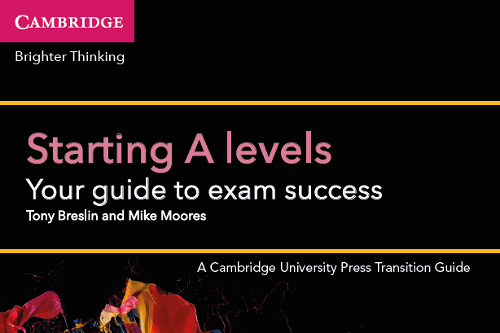












The UK Is home to 165,000 charities of all shapes and sizes
Financial Times, December 4, 2015

"In recent years and across all sectors we've seen what happens when weak governance meets charismatic leadership"
Tony Breslin
Breslin Social Impact
Transform Governance is a joint venture between Breslin Social Impact and Permuto Consulting


Need consultancy support? We have access to a range of specialists across sectors, across functions, and across the UK and beyond. Contact us to explore possibilities.
Lifelong learning
Wednesday 15th June 2016

In the run-up to the 1997 election, Tony Blair had spoken of ‘education, education, education’ as the three priorities for any Labour administration he would lead. In so doing, he all but secured the vote among teachers and academics, and boosted Labour’s appeal to floating voters, especially those with school-age children. The truth is that most of us heard Blair say
something a tad narrower: ‘schools, schools, schools’.
The Learning Age Green Paper published in 1998 appeared to change all that. It spoke of learning as lifelong, of a re-energised further education sector, and of embedding learning in the culture of society and communities. Fixing or improving schooling is a staple of challenging parties at general elections, whether it is needed or not. The Green Paper went much further than this and was one of a number of progressive outputs from the early years of that first Labour term. It seemed things really could only get better.
At a recent RSA debate, former education secretary David Blunkett identified The Learning Age as one of the pieces of work he was most proud of. But he, together with Vince Cable, David Willetts, David Hughes, CEO of the Learning and Work Institute (L&W; a merger of NIACE and the Centre for Economic and Social Inclusion), and the RSA’s Matthew Taylor, agreed that many of the fine ambitions set out in the report and elsewhere remain unfulfilled. So what can be done?
At the RSA we are revisiting those ambitions and will be offering new ones appropriate to the 21st century in a new paper to be published this spring. This work will reflect on these earlier aspirations — and the policy directions since followed by various administrations — and set out six components that might be considered vital for any sustainable and practical vision for the future of lifelong (and life-wide) learning: purpose, access, scale, sociability, entitlement and definition. We will be framing our proposals in the form of an advisory memo to a newly elected city mayor, because, in contrast to the analysis offered in the recent Education White Paper, we think a local perspective remains imperative in framing provision and clarifying purpose.
This question of educational purpose is much more complex in a world where employment is scarcer and labour markets are global and fluid rather than local and apparently fixed. In an era where the ‘work hard at school, get a job’ equation is no longer guaranteed to deliver (or at least to deliver a job for life), educational provision has to deliver across a triple scorecard that spans employment, leisure and citizenship.
The capacity to engage in learning throughout and across the life course has a new currency precisely because of the near-end of the lifelong career. Moreover, the likely reality of periods of non-work for most of us (or our children and grandchildren), and the growing democratic and participation deficits that Bernard Crick’s reports on citizenship education sought to address, means that educational provision must address our needs not just as workers, employees and entrepreneurs, but our aspirations as citizens and community members. It should enable us to engage confidently and creatively in all sorts of social and civic settings.
Widening participation
Access is arguably the biggest challenge that any renewed focus on lifelong learning faces. As David Willetts pointed out at the RSA debate, “the potential of new technologies for distance and blended learning is especially remarkable for professional and vocational education”. However, as annual surveys carried out by L&W consistently reveal, the reality is that there is an inverse relationship between the take-up of learning opportunities in adulthood and those who might benefit most from them.
Over the past 20 years, efforts to widen participation in higher education have significantly altered the demographic of young people progressing to higher education in spite of the emergence of fees and loans and the complaints of those who claim “too many kids are going to university now”, even if the change has been least among some of the standard-bearers of the Russell Group. We need to address the participation of disadvantaged adults in educational provision with similar vigour and intent, locally and virtually. In part, this involves actively seeking to create local cultures where participation in learning is the norm not the exception, and the desired route to personal autonomy and development. We need to get the message out there that education is power and that the fruits of learning will be more people being able to apply their creativity to bringing about positive social change.
Perhaps one approach to explore is to target resources not at types of learning but at types of learner. If the task is to re-engage reluctant, nervous, previously ‘failed’ learners back into education, does, in the first instance, the focus of the learning undertaken matter as much as the engagement in the process of learning itself? In any case, we need to open up multiple access points and locations, many of which will not look like conventional ‘schools’: think community halls, primary schools after the start-of-day school run or before pick-up, workplaces, youth groups, prisons, libraries; think online and off.
Scaling up
One ongoing tension in any education system is to reconcile mass provision and personalised learning. At one level, our growing knowledge of the experience of so-called ‘school-refusers’, increased levels of internal and external exclusion, and the increasing popularity of home-schooling reflect this tension. At another, some developments in the way we provide and assess learning over the past two decades have not helped. For example, the shift away from modularity in public examinations on the basis that it dumbs down standards makes conventional exam courses less accessible to adult learners, who (often for reasons of simple convenience) need programmes that are bite-sized. The focus on measuring the success of institutions on the basis of course completion helps to push learners towards larger chunks of learning, thereby reducing accessibility to adult learners, especially those with low incomes and significant employment and/or family responsibilities.
The implication is that, in terms of returning learners, institutions need to be incentivised to provide drop-in learning opportunities rather than be punished when these adults drop out, having gained the learning they need. The requirement is to develop ‘low-stakes-but-high-value’ accreditation. The notion of digital badges, as offered through the Cities of Learning framework, might offer one way forward. On the issue of ‘returners’, David Hughes at L&W is right to point to the support that good employers give those returning from maternity and paternity leave, and ask why educational institutions are often less adept at doing this for returning learners.
Finally, we need to look at the settings and locations in which learning is offered, especially to those who harbour a negative experience of earlier learning. The 21st-century regional ‘super college’ may offer fantastic facilities, but it remains school-like in image to those who do not cross its threshold. Such institutions are unlikely to prove attractive to our most reluctant learners. Family- and work-friendly learning opportunities, delivered in the kind of locations that individuals pass through in the course of their daily activities, might provide those who are tentative with a gentler step back into education. In short, we need provision that is human scale in size and tone, and the use of existing facilities may mediate some of the cost of this more dispersed, localised provision.
The learning multiplier
In a world of YouTube and Google, we may ask why we need to trek to colleges and classrooms for adult learning? Certainly, the internet has much to offer. But, fundamentally, the best learning retains a social dimension. That can be through email or a LinkedIn group but also through face-to-face relationships. The best learning is always collaborative and iterative; it is a conversation if not a vigorous debate; the need is to blend electronic and face-to-face learning, using the benefits of each.
There is another dimension to the sociability of learning at any age, from pre-school onwards. Great learning is shared, informally, formally and continuously. The marvel of learning is not just that it is ‘the gift that just keeps giving’; it is the gift that can be given away and yet never lost. I do not lose my learning by giving it to you; indeed, the likelihood is that I enrich it through our newly enabled discussions on the issue. Too often, we fail to maximise the benefits that might flow from sharing learning, benefits that an educational economist might call the ‘learning multiplier’.
Nowhere is this failure clearer than in the field of work-based training and programmes of continuing professional development. How often do individuals attend courses without any obligation to share their learning and, more importantly, any opportunity to do so? If we are to encourage employers to offer employees the opportunity to undertake accredited learning at and through work, and if we are to share the benefits of that personal learning more widely, we need to popularise strategies for sharing learning and professional development experiences with peers, subordinates and bosses, and across businesses and organisations as a whole.
The right to free education
In an era that has seen the introduction and escalation of loans and fees in higher education, less successful attempts to initiate a similar culture in further education, and the onset of ever-tightening public purse strings, the issue of entitlement cannot be ducked. Two observations are pertinent. First, the attempt to introduce the loans model in further education settings seems to have acted as a much bigger disincentive to learners than it has in higher education. As further education learners are typically older, although there are likely to be economic benefits, the investment does not come with something as clear cut as a graduate lifetime-earnings guarantee and the learning is not accompanied by the life experience and network connections that can flow from three or four years in a university setting. Second, without some notion of an entitlement, whether this is to be targeted or for all, current patterns of take-up are likely to endure. Again, those already persuaded of the value of learning will continue to be the likeliest to take up opportunities.
At the RSA debate, there was broad support for revisiting the notion of something akin to Individual Learning Accounts as a means of underpinning such an entitlement. L&W has carried out significant development work on what it calls Personal Career Accounts, and through its longstanding work on a Citizens’ Curriculum and call for a Career Advancement Service for those in poorly paid and low skilled jobs, it has begun to flesh out how an entitlement might be sustained and what a core curriculum for adult learners might look like.
The meaning of lifelong learning
We have to take the term lifelong learning literally: no longer simply the post-school corrective to earlier academic failure, but a journey in which the statutory years play a key part.
To this end, the RSA’s work is likely to propose a ‘0 plus’ analysis, which leads us to a repurposing of compulsory schooling itself, as a part of the lifelong learning continuum, not its preface. In such a model, the role of statutory education is not simply to accredit, qualify and classify young people, important as a decent set of grades is likely to remain. It is to build in every learner the appetite, capacity and confidence to go on learning — autonomously and creatively — so as to support their employment and career progression, their leisure and their participation in public life.
Locality and the civic realm is key to all of this. If our debate is anything to go by, there is widespread and cross-party agreement on the longstanding failure of national policies in this field. At the least, a local solution is worth a try. The growing focus on local identities, encouraged by the emergence of mayors and increasing moves towards devolution and regionalisation, may point to the development of a learning culture as an intensely local and context-sensitive activity.
After years of decline and marginalisation, a process apparently brought to its conclusion with the recent White Paper, education — or at least lifelong learning — may once again become a fundamentally local project, a staple of effective citizenship and a key marker of strong, confident, effective local government and community identity.
Find out more about the RSA’s Education work by clicking HERE
This article first appeared in the RSA Journal: Issue 1 2016
Tweet Share on Facebook



